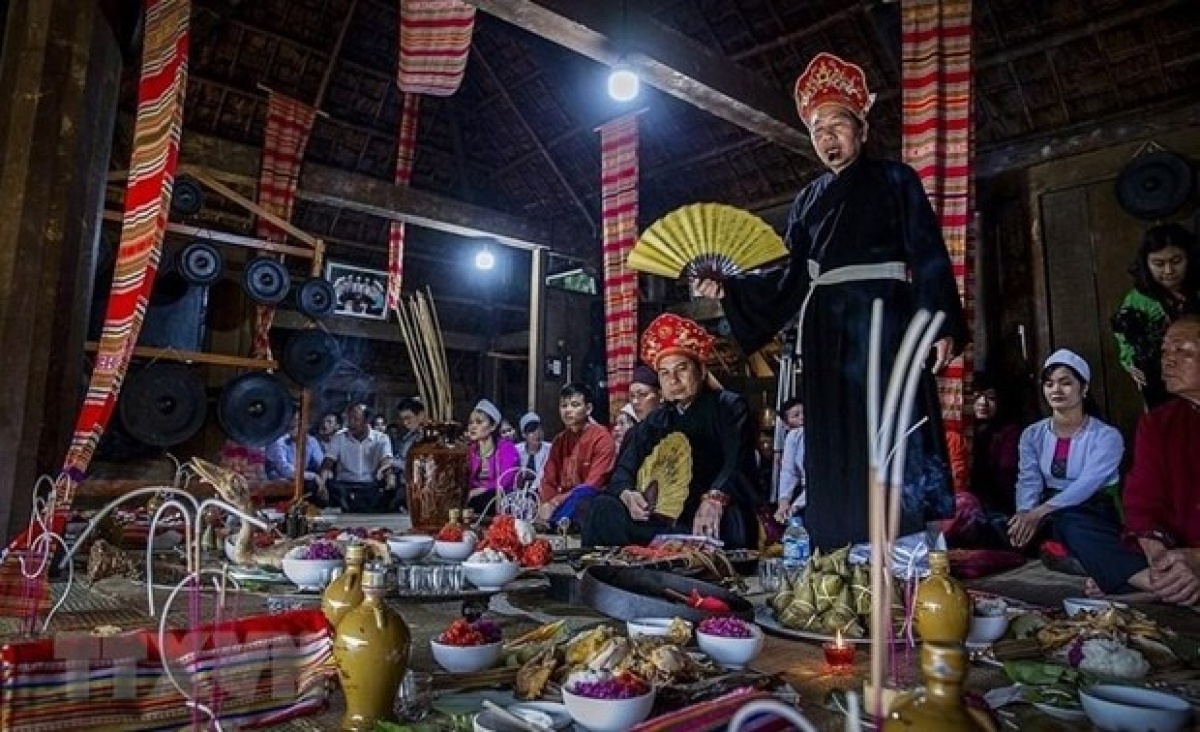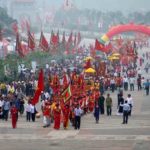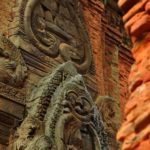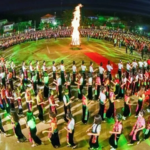Mo Muong is a job and also a performance practiced at funerals, religious festivals, and life cycle rituals by the Muong ethnic group. The art consists of Mo prayers and performances, by Mo practitioners, or Mo artisans.
Through generations, Mo prayers have been passed down verbally in the community. When they’re collected, translated, and published in books, however, they begin to exist separately from people.
These days, most Mo prayers are called Mo Muong. They are a collection of verses recited at traditional Muong funerals. They are divided into “cat Mo” and “roong Mo”, similar to chapters in literature. Each Mo chapter has its own theme and purposes for each item in a funeral ritual. The chapters may tell folk epics, customs or lessons.
Each Muong community has its own version of Mo, but they are all fairly similar. The existence of various versions of Mo has helped expand the heritage and spiritual life of the Muong people.
Mo Muong has a long life, spanning centuries, as it has always helped to nurture the characteristics and the souls of the Muong people.
It is the essence of labour, production, cultural behaviour and the philosophy of the Muong people, reflecting their love of life and home villages.
Mo Muong has been practised in the northern mountainous provinces of Ninh Binh, Phu Tho and Son La, the north central province of Thanh Hoa, the Central Highlands province of Dak Lak and Hanoi.
Muong ethnic people live in all 30 districts in Hanoi, mostly in Thach That and Ba Vi. There are seven Mo prayers in the city, with the oldest 86 years old, and the youngest 28 years old.
The municipal Department of Culture and Sports is coordinating with agencies and localities to build the national dossier.
Experts at the conference spoke of methods to review Mo Muong in accordance with viewpoints and requirements of UNESCO.
The conference has also helped to raise the awareness among officials about Mo Muong, thus better preserving and upholding its values.









